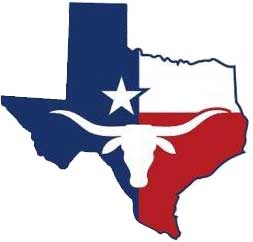Critical Electrical Customers
Important Information About Electricity Load Shedding and What It Could Mean to You
The Electric Reliability Council of Texas (ERCOT) manages the flow of electric power to more than 26 million Texas customers. ERCOT is responsible for ensuring that the supply of electricity is sufficient to meet customer demand (load) for electricity in most of the State.
When electric supply provided by all available power generation plants, wind farms and other sources becomes insufficient to meet customer demand, ERCOT begins emergency operations. During a power emergency when electric supply cannot meet consumer demand for electricity and all other operational tools have been exhausted, the demand for electricity must be reduced to avoid uncontrolled blackouts. As a last resort, ERCOT will instruct electric utilities to implement controlled customer outages to reduce the customer demand for electricity on the ERCOT grid. This is referred to as load shed and will last until the power emergency is resolved by ERCOT.
Typically, before calling for controlled customer outages, ERCOT takes steps to reduce the demand on the electric grid by asking customers to reduce electric usage. Electric utilities, including the City of Coleman, via the City of Coleman’s ERCOT Transmission Operator, American Electric Power (AEP), are obligated to immediately implement load shed procedures when ERCOT instructs.
During customer load shed events:
- All customers should assume their power could go out without advanced warning. Efforts will be made, as much as possible, to provide advanced notification of pending outages, but circumstances do not always allow that to happen.
- Customers designated as Critical Load, in accordance with PUC §25.497, are not guaranteed an uninterrupted supply of electricity. It is the responsibility of the retail customer to make necessary arrangements for alternative sources of electric power should a localized outage or load shed event occur.
- Residential customers dependent on electric-powered medical equipment, such as those designated as Critical Care or Chronic Condition, in accordance with PUC §25.497, are encouraged to have a solid back-up plan in the event they lose electricity. It is important to note that these customers are not excluded from controlled outages and may lose power during a load shed event. Anyone who depends on electricity for life-sustaining equipment should have a back-up plan in place.
- The procedure for a customer to apply to be considered a critical care residential customer, a critical load industrial customer, or critical load according to commission rules, can be found below.
- Electric utilities will prioritize continuity of service for certain customers whose service is critical to the community during an emergency or those whose service provides major support to the integrity of the electric system during an emergency. Examples include hospitals and public safety accounts.
- Because a load shed event is an emergency order from ERCOT based on a shortfall of electricity being generated, electric utilities, including City of Coleman / AEP, do not have the information to be able to notify individual customers if they may lose power, when they may lose power or how long the load shed event may last.
- In extreme power emergencies, ERCOT may require electric utilities to shed large amounts of load over long periods of time. In these instances, electric utilities like City of Coleman / AEP may not have the ability to rotate outages without risking the stability of the entire electric grid. When this happens, some customers may be without power for an extended period of time. These outages are critical for ensuring the integrity of the state’s electric grid and preventing a system-wide blackout, which could be long-lasting and have a significant impact on all aspects of life.
- Electric utilities are required to continue to comply with ERCOT controlled customer outage instructions until ERCOT determines that outages are no longer required.
- The Public Utility Commission of Texas website (Hot and Cold Weather, and General Energy-Saving Tips) provides examples for customers to reduce electricity use at times when involuntary load shedding events may be implemented.


